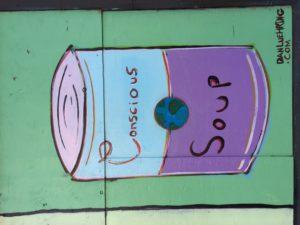Stop Writing Unconscious: Secrets to Inspire Action on Your Nonprofit Appeal
 You want to raise money with your fundraising appeal, right?
You want to raise money with your fundraising appeal, right?
Guess what?
However you feel when you sit down to write is how your readers will feel when they sit down to read.
Feeling anxious? Unprepared? Bored?
Your feelings come through in your writing. Or not.
So… first put a smile on your face! Think about what inspires you about your mission. What are you passionate about? What drew you here and keeps you here?
Passion is contagious.
You can do this – it’s just like talking to a friend about how important your cause is.
Yup. Your donor is your friend.
Talk to them exactly that way.
Becoming a writer is about being conscious.
“When you’re conscious and writing from a place of insight and simplicity and real caring about the truth, you have the ability to throw the lights on for your reader.”
– Ann Lamott


 One of my pet peeves as a donor is making a contribution (via a peer-to-peer request or tribute gift in honor or memory) in support of a friend; then receiving nothing but a form receipt.
One of my pet peeves as a donor is making a contribution (via a peer-to-peer request or tribute gift in honor or memory) in support of a friend; then receiving nothing but a form receipt.


 People are more generous when they feel more connected.
People are more generous when they feel more connected. 
 If I had to tell you what you need to do to succeed with major gift fundraising in one sentence it would be this:
If I had to tell you what you need to do to succeed with major gift fundraising in one sentence it would be this:
 Most fear of fundraising boils down to two factors:
Most fear of fundraising boils down to two factors:

 Probably not as much as you might think.
Probably not as much as you might think.